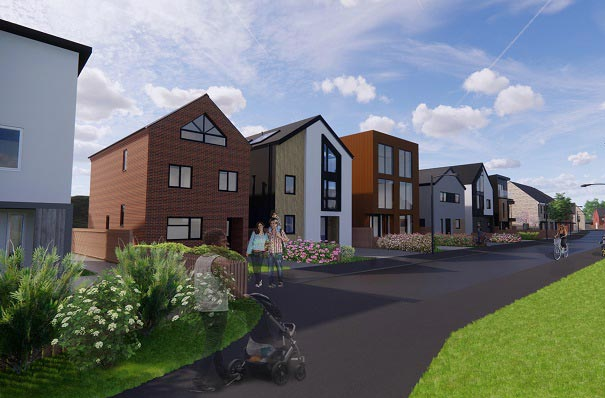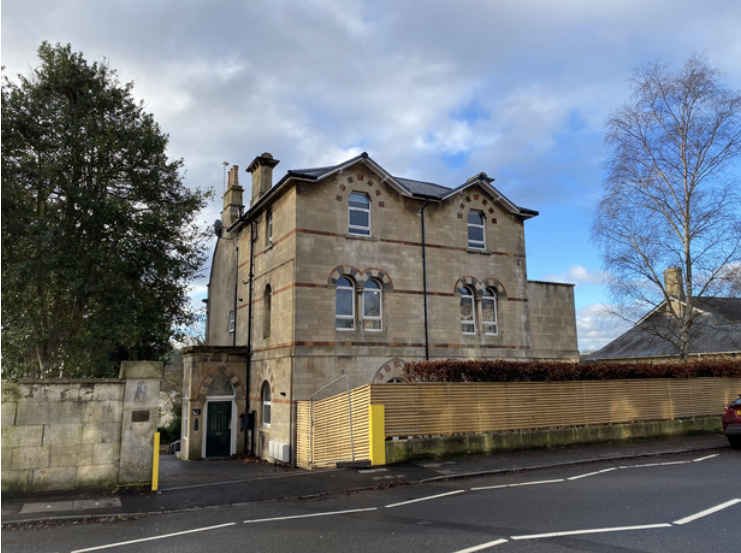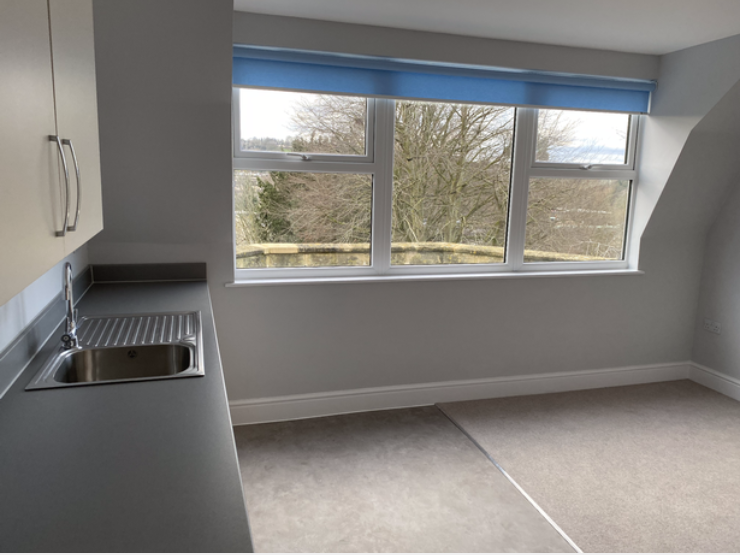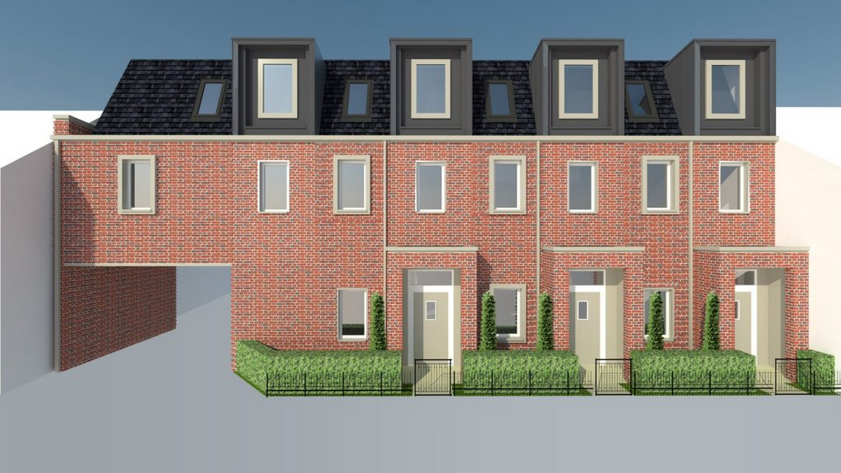There’s been a fair bit of discussion about Lib Dem housing policies and our record recently. It’s become obvious to me that many members, especially Young Liberals, don’t appear to know what our national housing policy is, or our track record. I’ll comment on the national policy in another blog, our track record of building and enabling housing, and market intervention is so multi-faceted it deserves a stand-alone blog. The examples below are not a completist or definitive statement of our record in Local Government, the Lib Dems now lead 65 councils. Hopefully, at least, this will give people a good indication of the main types of policies that are being pursued, and particularly good examples of them, at that.
Eastleigh – developer extraordinaire
The Lib Dems have been in control of Eastleigh Council since 1995 (having been the largest single party since 1987). It’s used its lengthy time in office to become an exemplar council when it comes to the built environment. It can point to a record of building 3,500 houses with no doubt many more in the pipeline. Bear in mind Eastleigh has a population of just 136,000, you’d have to build 28,000 houses in Birmingham to get the same number per head. How has Eastleigh managed to do this? Firstly the desire is there, it’s decided to take on a role that goes far beyond most Borough councils. Secondly it’s been sensible and competent with its finances – the council has made a number of property investments, but mostly in industrial and office space, avoiding the ruinous investments in retail made by several Conservative councils in the last 10 years (funny how many transactional mistakes the Conservatives make when they claim to be arch-capitalists). Eastleigh has taken its investment income, bought land, and built houses of various tenure types, with an accent on affordable housing. It’s done this on a scale that few other councils can match and it’s clearly taken the public with it as the current composition of Eastleigh is Lib Dems: 35, the rest: 4. To find out about Eastleigh’s housing record in more detail check out this discussion between Keith House and Mark Pack from earlier this year:
https://www.nevermindthebarcharts.com/e/how-to-build-houses-and-win-elections/

Portsmouth – council house buy back
Thatcherism – aren’t ya sick of it? I grew up in the 1980s and bore witness to a wholesale redefinition of the role of the state and a rush to sell off state assets. This continued during the 1990s and 2000s with more and more asset disposals, this often went under the radar as a local council selling off wasteland is less important than the sale of Jaguar, BP or British Aerospace. The transfer of 10s of billions of £s worth of public assets to the private sector over 40 years conditions you to expect the public – private property nexus to be all one way. A few councils such as Portsmouth have bucked the trend, however. Portsmouth builds council houses, but in the context of limited land availability it’s also pursued a council house buy back policy. Buy back schemes aren’t without their critics – most property in the South of England, even ex-council housing, is valued at such a level it should be cheaper to build a new house. However I would argue that if Housing Associations can afford to buy houses that were never in the public sector, councils should be able to buy ex-social housing too (this has happened in my home village). I’d much prefer a council to intervene in the market, bring properties up to standard, and to be held accountable than the alternatives.

North Norfolk – the rural home enabler
What positive change can you bring to your district when large tracts of land are subject to very restrictive planning classifications and you’re not pulling in money from Business Rates or other public sector bodies? This is the challenge facing North Norfolk. It wants to see more housing so it’s looked at planning work arounds – the Eastern Daily Press recently observed, “A recent Rural Housing Alliance survey found NNDC was among the top five English councils for the number of affordable homes built in rural districts for 2018-2021.” North Norfolk Council is making this happen through by widespread use of rural exception sites – these are often single-plot developments that are built by Housing Associations that are then offered for rent to local people. The pro-housing inclination of the council is backed up by Lib Dem Cllr Wendy Fredericks who says, “Please come forward with land and ideas.”
Back when I was studying politics in the 1990s it was said that Local Government was on its knees and councils had taken on a passive role as ‘enablers’ – this was then used as a pejorative term. However it is important that North Norfolk can be a better enabler of rural housebuilding than, say Tory-run Breckland or Fenland, and most certainly better than Mid Suffolk where the Greens have been voted in on an ultra-NIMBY ticket. North Norfolk doesn’t have the brownfield sites, or grants from Central Government that other councils have, but it’s playing the cards it’s been dealt better than its East Anglian neighbours.

Vale of the White Horse – Community Land Trust
This Oxfordshire council has been working for a few years towards establishing CLT housing and its first development was handed over to residents this week. Eight flats at Crofts Court, Botley have rent so low they can be afforded by people on Universal Credit. The strength of Community Land Trusts are that the properties are held in trust and can’t be part of any Right to Buy scheme, they are rented to locals, who form management teams to maintain the buildings and any public realm space held by the CLT. The scheme has been part-funded by Vale of the White Horse Council via Section 106 contributions. It must be noted that Botley is on the edge of Oxford but is surrounded by Oxford’s green belt. Developments like Crofts Court, which are relatively small scale and clearly benefit the community, are far more likely to get planning approval and buy-in from the public on the fringes of the Green Belt where building to scale is rare. Oxfordshire Community Land Trust is looking to build more schemes across the county, with Lib Dems in power everywhere outside of Oxford excluding Cherwell, we can be cautiously optimistic that this is the start of a fruitful partnership.

York – yes to self build
While the Lib Dems have just handed power over to Labour in York City, the party has laid foundations for a good housing policy. A plan to build 600 homes with a mix of private, council and self build dwellings included. Property makeover shows and in particular the self build show Grand Designs has stoked interest in a concept that is peripheral to the UK housing industry but has been mainstream in Continental Europe for a long time. Despite the popularity of Grand Designs the number of self build, or to use the industry term custom self build (CSB), house completions has barely increased. This is because developers and major house builders have the market largely sewn up. Building on a single plot is dwarfed by the largest schemes (here in NW Kent within 15 miles of me are the following masterplans: Hoo Peninsula 12,000 homes, Swanscombe/Ebbsfleet 15,000 homes, Bexley Riverside 6,000 homes, Thamesmead/Abbey Wood 20,000 homes). If you take a laissez faire attitude to CSB it barely makes a dent in the market and you need Central or Local Government intervention to progress it. Good to see York, therefore, include an element of CSB in their plan and I hope this becomes a more widespread practice for councils in future.



Self Build in York – progressing nicely as part of a well-balanced plan
Sutton – working with a big name architect
London Borough of Sutton is a longstanding Lib Dems controlled council, so longstanding that council housing was still being built across the UK when we assumed power in 1986. Thatcher and Major soon stamped that out, but Sutton, like other Lib Dems councils has restarted a council house building programme for the first time in a generation. Whenever the public sector does infrastructure for the first time or returns to it after a long hiatus there are question marks about the capacity of the client, and the construction industry’s ability to deliver. When I reported on the school building sector, the Government was looking to ramp up building from 25 secondary schools p.a. in 1997 to 400 p.a. by 2010. That involved a lot of contractors and architects getting involved in the schools sector for the first time. That led to teething problems. The same potential pitfalls are there if councils build houses after a long break too. Cost overruns and time delays have dogged Croydon’s public corporation Brick by Brick, for example. Sutton has to an extent sidestepped those problems by working with an experienced and well-respected architect – Curl la Tourelle – who has designed community centres and primary schools in the borough before. Following a feasibility study carried out by Curl la Tourelle, nine urban infill sites were earmarked for 44 houses.
A Curl la Tourelle spokesperson says, “Sutton had identified a number of opportunities for infill development. Often occupied by rundown garages, many of the sites were hidden in inhospitable places. We visited nine very different sites during our research. Some were tucked behind high street shops or occupied an unbuilt gap in a residential row; others were interstitial areas on the edges of estates or unused plots backing onto neighbouring gardens. Rather than working remotely, we spent time at all of them, making sketches, talking to dog walkers and other passers-by.”



Curl la Tourelle was asked to transform dead spaces into council housing across Sutton
Bath & NES – office to residential conversion
Often Lib Dems win in places where planning restrictions are huge. Bath & NES is one such place, Bath has a city-wide conservation area covering 1486 hectares. This makes any new building difficult, however the council has the same progressive urges as other Lib Dems groups so has gone down the office-to-resi conversion route to kickstart its council house programme. The council converted a Victorian office, Newbridge Hill, into seven council flats, and is the start of a programme to deliver 58 homes (the low number perhaps indicating how challenging it is to identify sites in a conservation area). The converted flats represent the first council housing in Bath & NES since it was sold off in 1999, and priority will be given to local NHS workers. Tom Davies, who was cabinet member for housing at Bath & NES, said last year, “We have got aspirations to do hundreds of council houses if needed, thousands in due course. The first phase that we were looking at was to use council owned assets that the council did not need any more and use these as the first council homes.”



Newbridge Hill – a thorough office-to-resi conversion
Westmorland & Furness – dealing with the tourist housing trap
This new unitary council takes on large expanses of sparsely populated upland Cumbria where a long-term housing shortage caused by various planning restrictions (Lake District and Yorkshire Dales National Parks and North Pennines AONB) has been made worse by second homes and Airbnb. Locals are priced out, then communities are hollowed out. This is something that local MP Tim Farron has been very vocal about for a number of years now. Due to all the planning restrictions newbuild options are limited, but policy instruments do exist to try and mitigate the impact of asset inequality. Westmorland & Furness was the first council in the UK to suggest levying a 100% Council Tax surcharge on second homes. An ITV report on Westmorland & Furness’s debut budget as a newly formed authority said in March, “The council states its decision to double the council tax charge on second homes was taken alongside other decisions intended to help the council tackle the affordable housing crisis in the area. These include a 200% premium for properties kept empty for more than five years, and even higher charges from April 2024 for properties kept empty for more than 10 years.” Cllr Andrew Jarvis told ITV, “Housing is a huge local issue and one that we are prioritising. We want housing to be available for local people and we don’t want homes wasted, lying empty for years. The additional income we generate from these decisions will help fund work to tackle the housing challenges that we face in our area.”

Colchester – all singing, all dancing
If York has pursued the most balanced, multi-faceted policy, Colchester arguably has the boldest housing policy right now. In 2018 Colchester was straight out the blocks when rules changed for Local Government housing finance, with the cap on the Housing Revenue Account lifted. A LGiU report stated, “Once the cap was lifted they were able to pursue those more ambitious plans, including over 100 affordable units over four sites and four former garage sites with between 35 and 40 affordable units at social rent, redevelopment of an existing sheltered housing scheme, and using borrowing along with Right to Buy receipts to buy back properties offered back under the Right to Buy covenant.”

Overall Colchester’s housing plan includes:
• Building eight new homes on a vacant site at Military Road
• Building 16 new homes on former garage sites at Hardings Close, Buffett Way and Scarfe Way
• Buying back 50+ former Council properties using the ‘Right to Buy Back’ clauses
• Purchasing 100+ properties on the open market
• Redeveloping the sheltered housing provision at Elfreda House (increasing numbers and improving quality)
• Delivering 120+ affordable homes (30%) within developments totalling 400+ homes across sites at Creffield Road, Mill Road and St Runwald Street being developed by Colchester Amphora Homes Ltd
bringing forward more garage sites before 2024 in a third phase of development sites
Note that Colchester’s plans go one step further than Portsmouth, buying private housing that was never in the social housing sector. In total it plans to deliver 350 new council homes by 2024.
Here on the IoW all of this resonates as we face an 80% reduction in rented housing the 3rd worst affordability ratio for housing benefits(0.4%) a massive housing list and 2nd homes and Airbnb/ holiday homes and an AONB & Biosphere designation.
We also see an Independent admi. deliver SFA. 5 flats last year nothing in the last 6 months.
As a Cllr & Chair of Regen/Neighbourhoods scrutiny & policy how do we encourage/cajole an Admin & Council officers to actually do any of this?
LikeLike
Being a popular tourist destination seems to be a millstone for locals in so many parts of the UK – low skilled, low paid hospitality jobs combined with high house prices and ghost towns caused by absentee 2nd home owners. I agree Nick, that there needs to be more discussion and a greater priority placed on the housing situation in places like IoW, Devon, Cornwall, West Wales, Cumbria etc. Apart from the Council Tax surcharge talked about in the blog I’d also like to see certain authorities given special status whereby they can keep all the stamp duty from house sales in their area and have that ringfenced to spend on council housing.
LikeLike